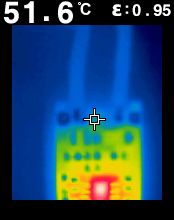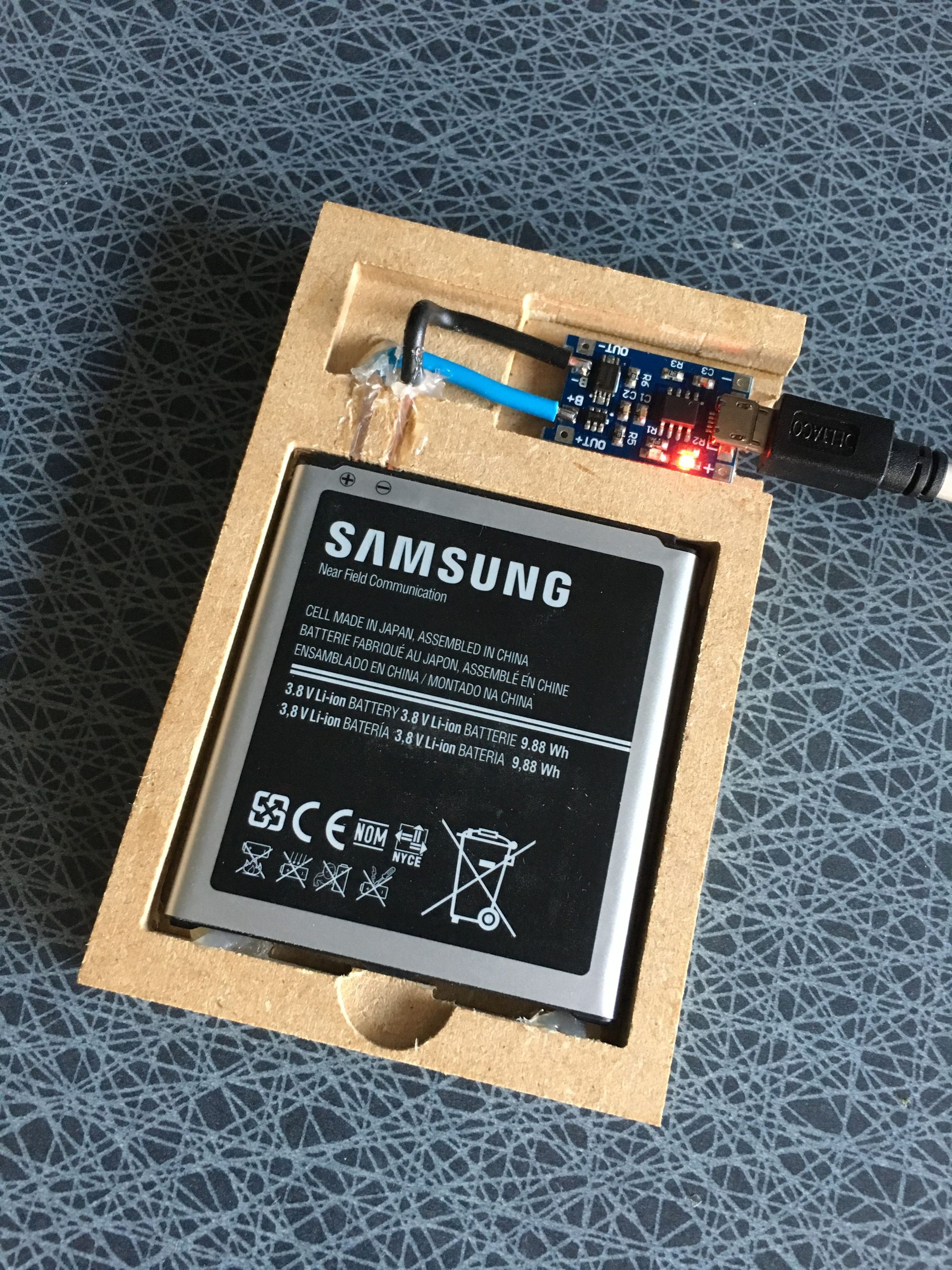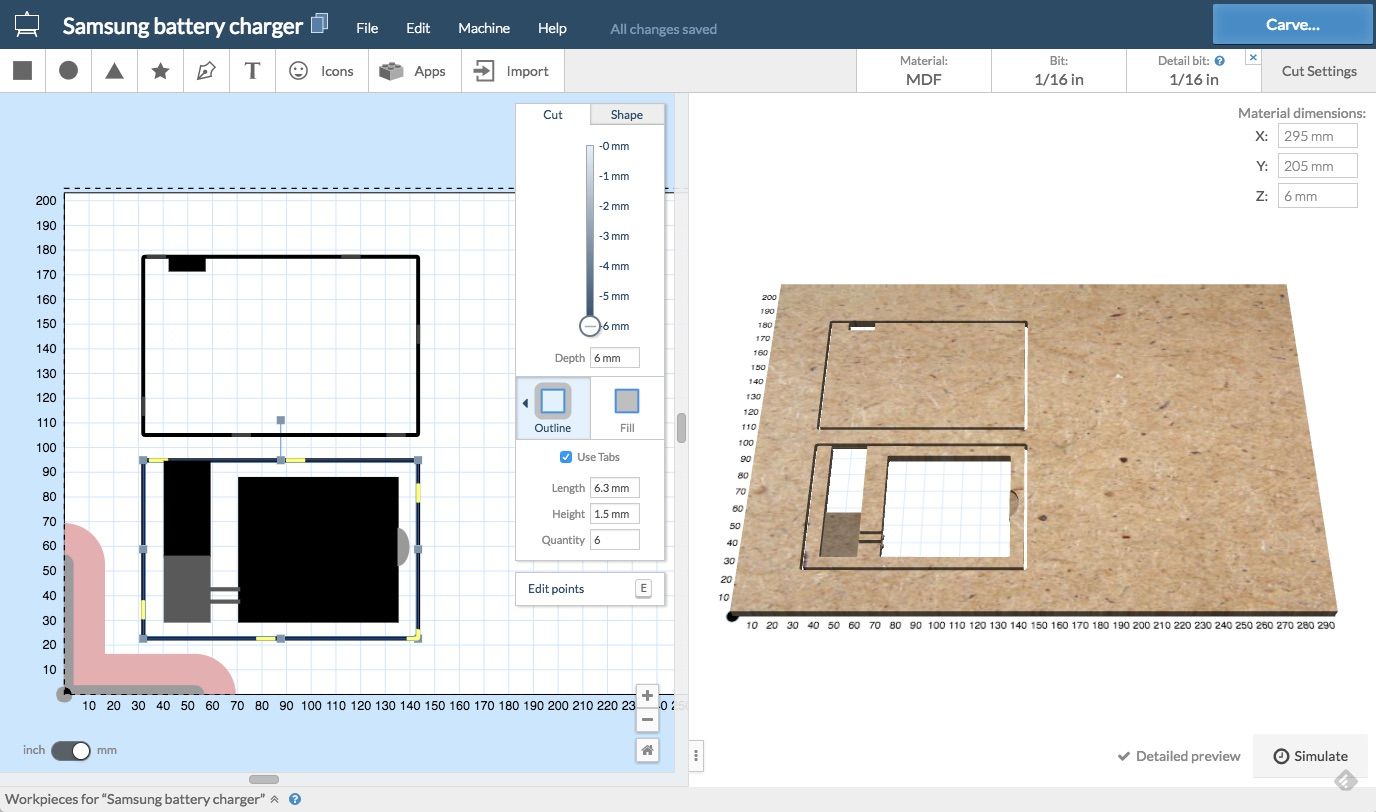iPhone killed the removable battery - How to make a charger for cell phone batteries

Last weekend I finally got around to doing something I have postponed for several years now.
Being somewhat of a gadget hoarder, I have ended up with quite a large stack of rechargeable batteries. Everything from 12 Volt lead-acid ones from old UPS:s to Lithium-ion variants from mobile phones.
The last kind are actually pretty interesting. They pack a significant punch when it comes to energy storage, the problem is that they are designed to go into cell phones (at least pre iPhone ones where you could remove the battery!), and there are thus no separate charging docks or battery holders.
Still, it would be sweet if they could be used to power electronics gadgets that I build myself…
It is of course possible, and even quite easy to do – here is the very first prototype in action:

Free of charge
After giving up searching online for suitable battery holders, I turned to the Easel 3D modelling tool and designed a battery holder with integrated charger.

The idea is simple.
- Start with a sheet of 6 mm MDF board.
- Use the Carvey to mill out a bottom and a top piece. Glue the two together with regular wood glue.
- The top piece has cut-outs for the battery, pogo pins for the battery terminals and a cheap Li-ion charger module from AliExpress.
Hot glue the charger module and pogo pins in place, solder a couple of (reasonably) beefy wires between the two and we’re done.
Works a treat!
An added bonus is that it is now trivial to use the existing design to create a stand-alone battery holder (no charging module) that can be included in whatever electronics project that need a battery for mobility.
Really no downsides or issues with the project so far… I was concerned that the charger or battery would overheat (I am after all using MDF, which is basically wood and glue – burns quite well if thrown on a fire). No problem though, monitoring the whole setup using my FLIR IR camera, the output stage of the charger module is the hottest part at ca 50 degrees Celcius. No problem.
The whole device (charger module + battery mounted in the MDF holder) in fact runs pretty cool, the charger is by far the warmest part.
